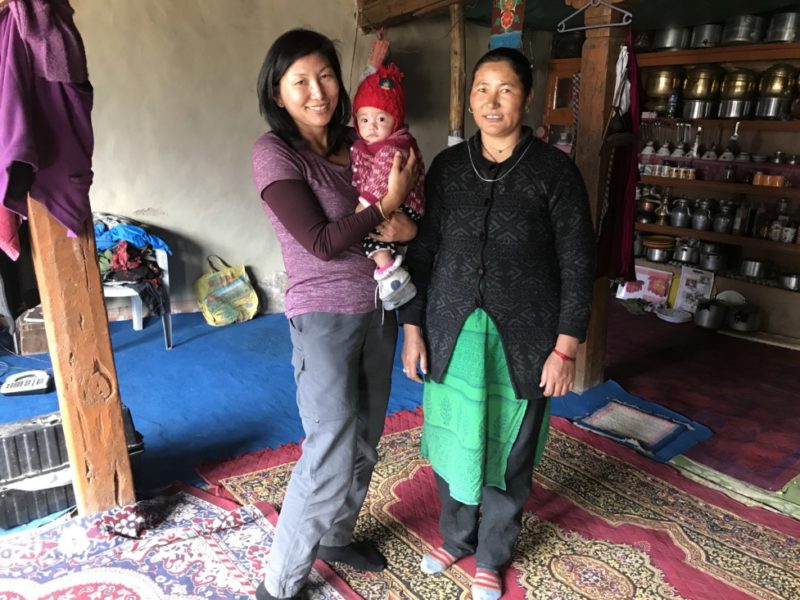
10 Jul Farewell reflection
After almost five years with the Australian Himalayan Foundation, Head of Programs Tshering Lama O’Gorman is leaving the organisation. We sat down with her to hear her thoughts on her time with us, and the future facing the Himalaya.
How did you begin working with the Australian Himalayan Foundation?
I was originally born in Nepal and after working with WWF in China, I moved to Australia in 2010. In 2013, I saw AHF featured on the TV and then I went online to learn more. I had been doing Snow Leopard conservation work, including some fundraising for a project in Nepal. Through this work, I was introduced to Carolyn Hamer-Smith (former AHF CEO). We had a coffee to discuss this project and the timing was perfect, as an opportunity in AHF Programs had come up. And the rest is history! I joined AHF in 2014, doubling the head count of AHF permanent employees at the time.
What is your proudest moment at AHF?
It was really the work we did post-earthquake in Nepal – relief, recovery and rebuilding! After the earthquake hit Nepal on 25 April 2015, we were one of the first NGOs on the ground. AHF supported immediate relief aid to some of the hardest hit areas. We sent a medical team with disaster response experts from our network, Andrew Lock and Jeff Bartram. Once we informed our network, our AHF family were so supportive! The phones started ringing and the money poured in – we raised over a million dollars for the earthquake recovery.
AHF worked with a small number of reputable NGOs in Nepal during this time to support disaster-affected people through relief projects. We covered some of the most devastated regions in Nepal, including the Solukhumbu district. The impact was significant and lasting.
A few months later, I suggested that we place our efforts into rebuilding the education sector in the AHF project area of Solukhumbu. This area had been severely hit by the second big earthquake in May 2015, with many schools destroyed and damaged. In conjunction with Australian architects and engineers, the Himalayan Trust UK and Himalayan Trust NZ, AHF concentrated on building safe classrooms. We worked collaboratively, targeting the most severely affected schools. It was a massive effort to coordinate the rebuilding projects, but we rebuilt every school that we said we would – 26 schools in remote areas.
For me, this was the most challenging job I have done in 25 years. I believe a combination of relief aid and focused recovery efforts was critical in supporting and rebuilding the education sector where AHF works.
What will you miss the most?
I will miss the work in the field with AHF projects. The real experience of actually connecting with local people and making a difference to youth and communities in small or big ways is something that I will always cherish.
I will also definitely miss the AHF team and our partners’ teams. They are a really wonderful and dedicated group of people who are so inspired with such big hearts. I will also miss the volunteers here in Australia and working across the region.
What do you see as the biggest challenges facing the Himalaya?
This is a big question – the politics, the socio economic conditions – across the three countries in which we work, there is so much difference.
I think that most of the areas that we work in are still politically in flux and will take a number of years to stabilise. Nepal itself is going through decentralised federalism and will take a number of years to get to an effective and functional state. While across the region it is coming to a better place, it is still very challenging for the work that we do. On the positive side, there is a lot of progress in the democratic process and people are becoming informed of their rights and becoming really empowered, so these are the wheels of progress.
Then of course, the challenges around natural disasters and climate change impact are another obstacle. The Himalaya is also known as the ‘third pole’ and is incredibly fragile ecologically. Climate change will have the earliest impact in this region. Sadly, the poorest communities will suffer the most. It is really important that help these people build resilience, and empower them with knowledge so they can start their own local actions.
What are you going to do next?
After almost five full years at AHF, I will take a few months break! Then I will continue to work in the development and environmental sector in an independent capacity.

